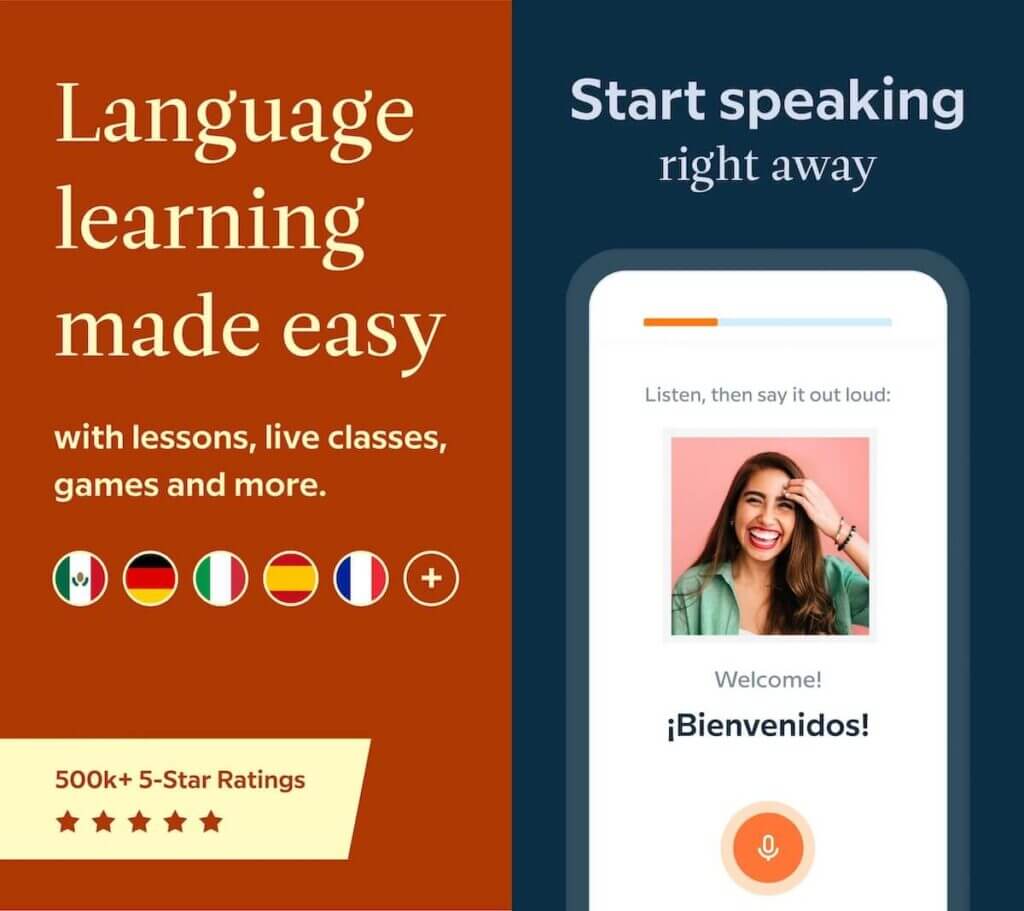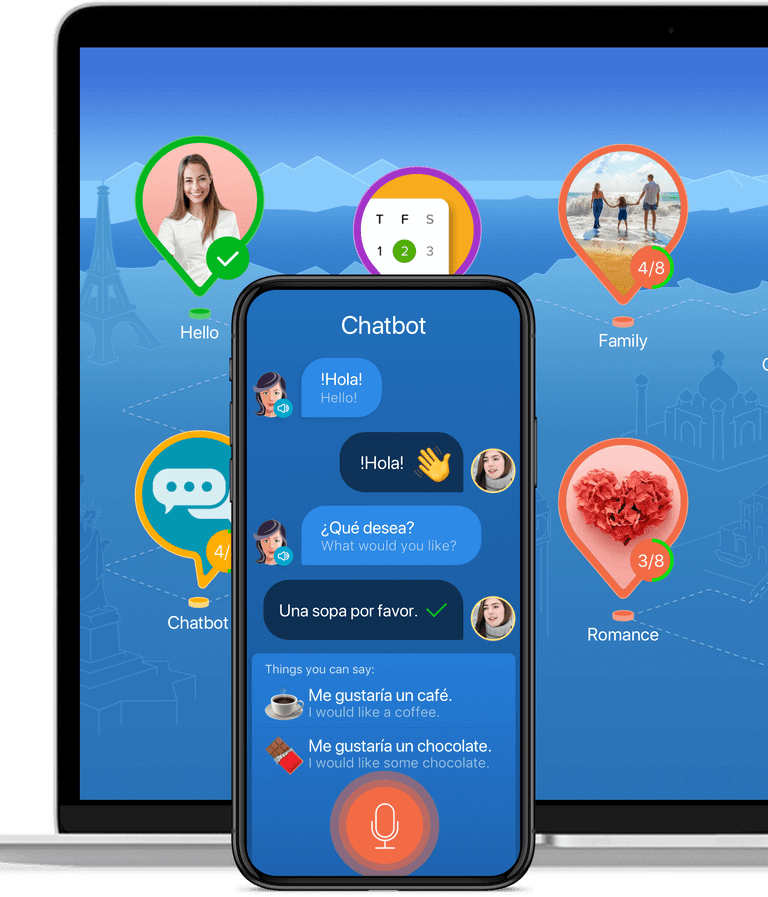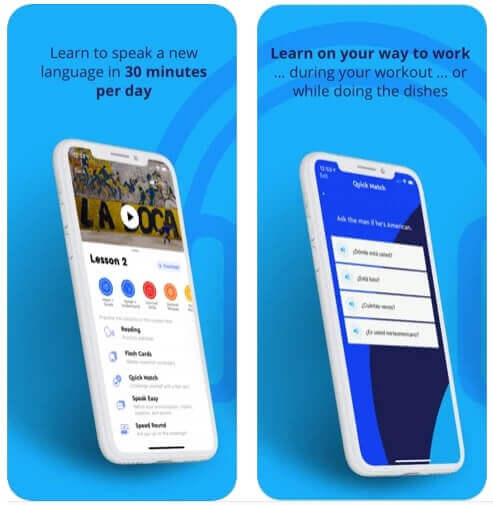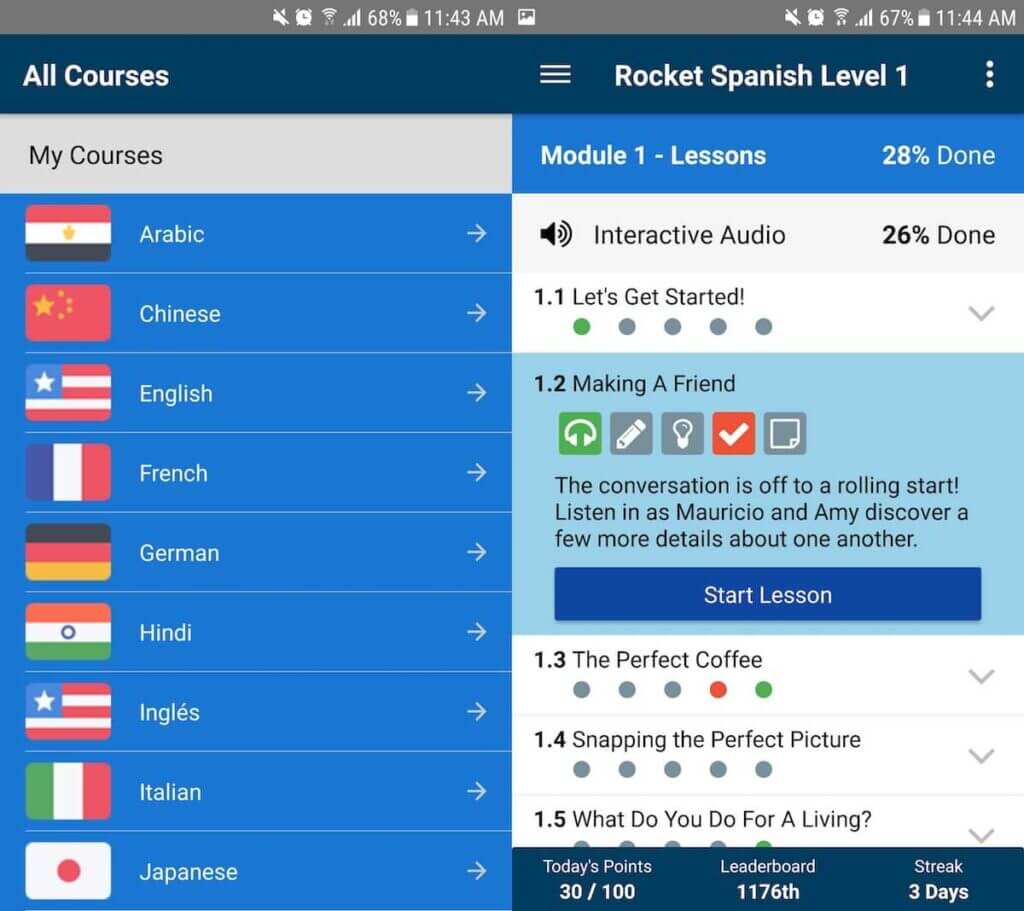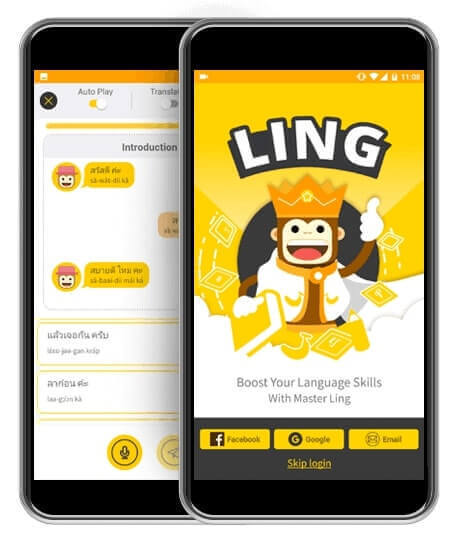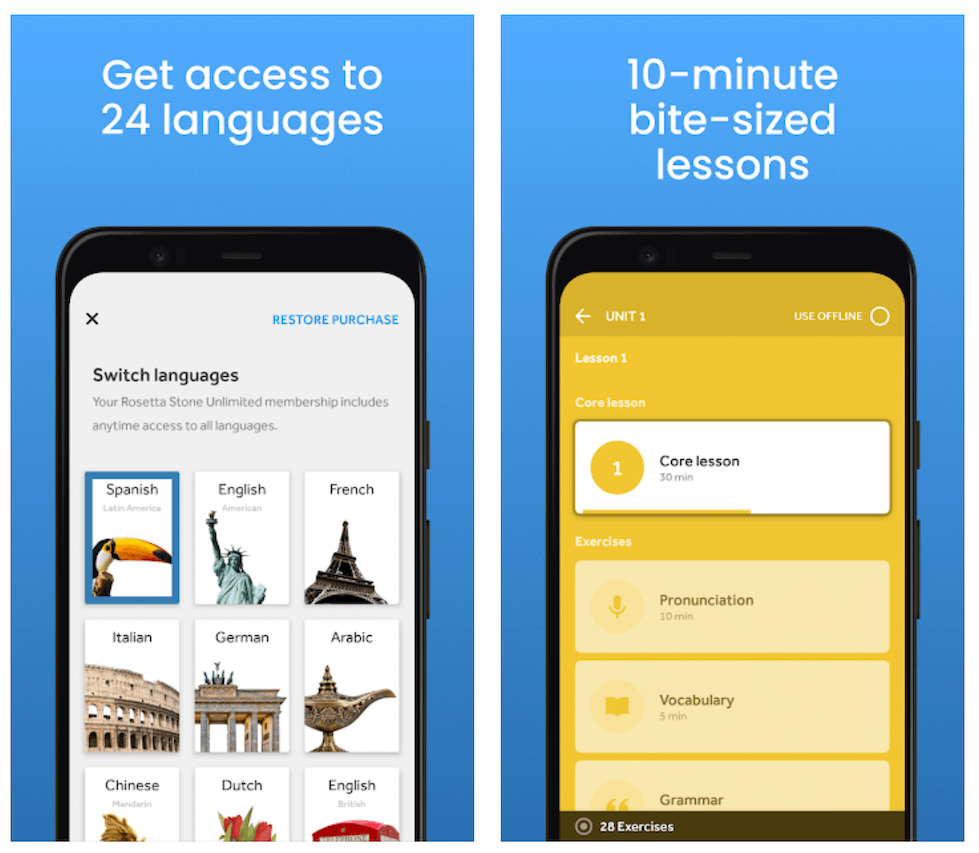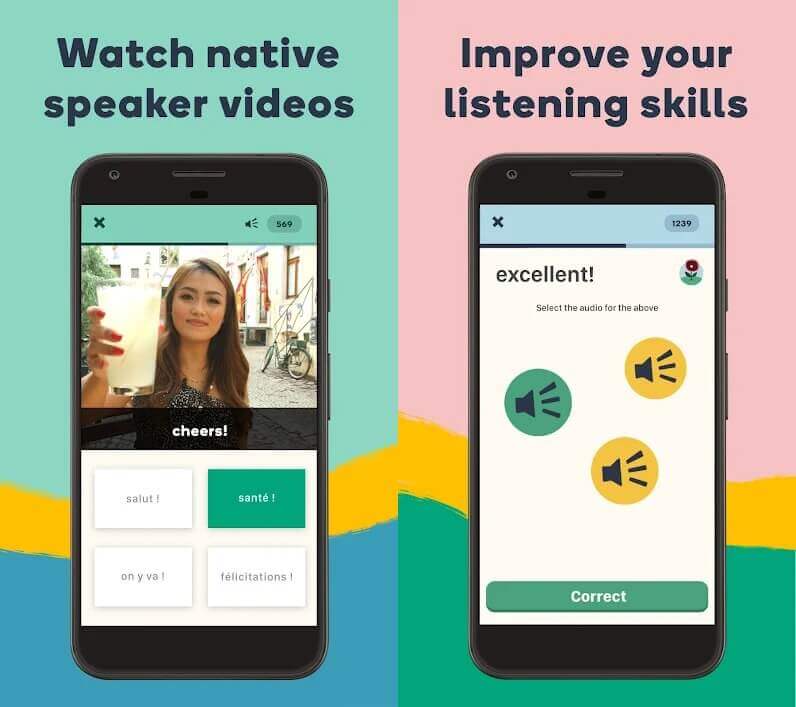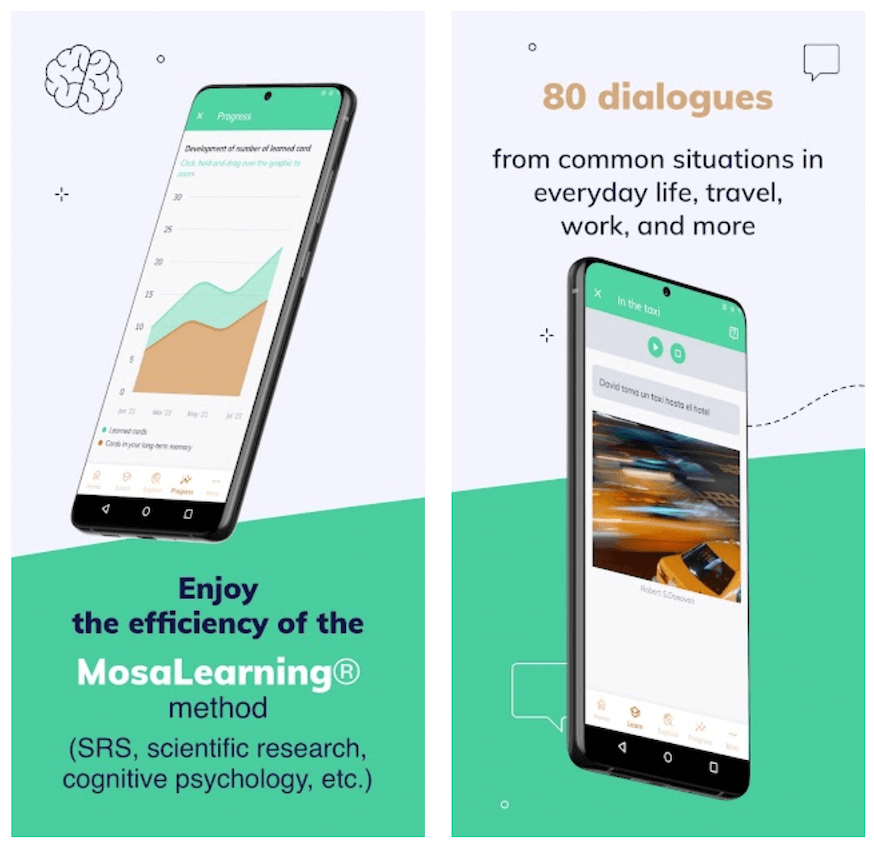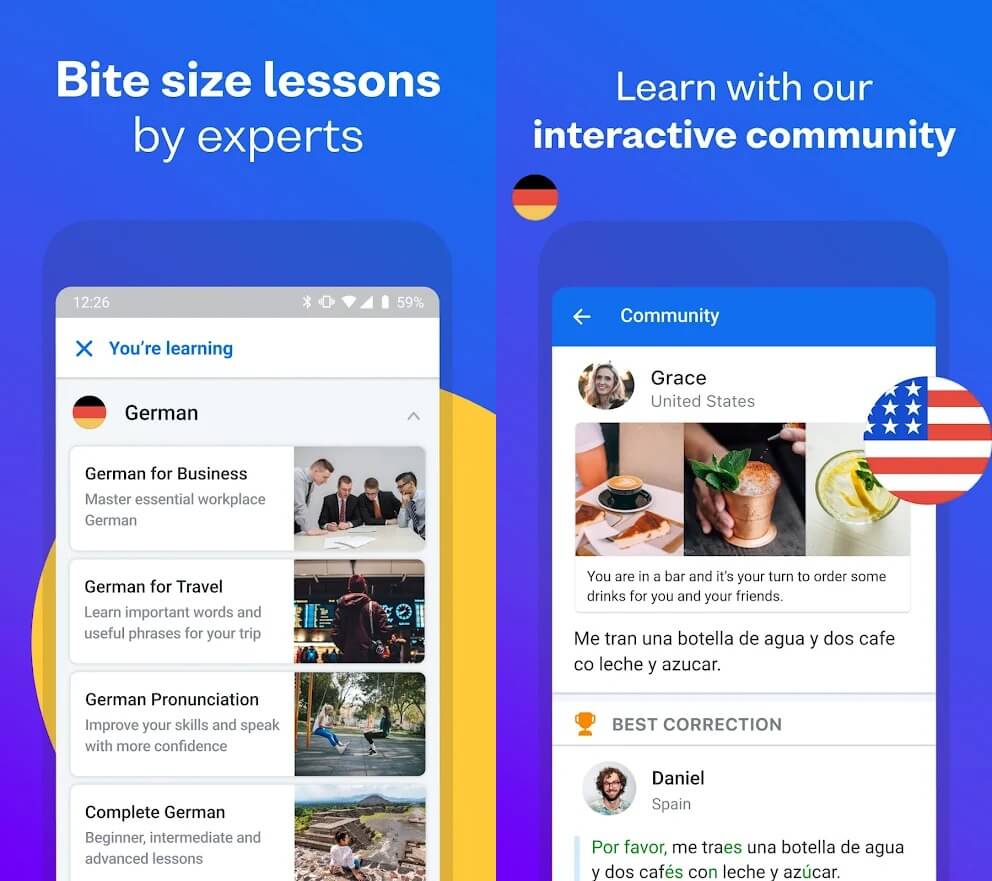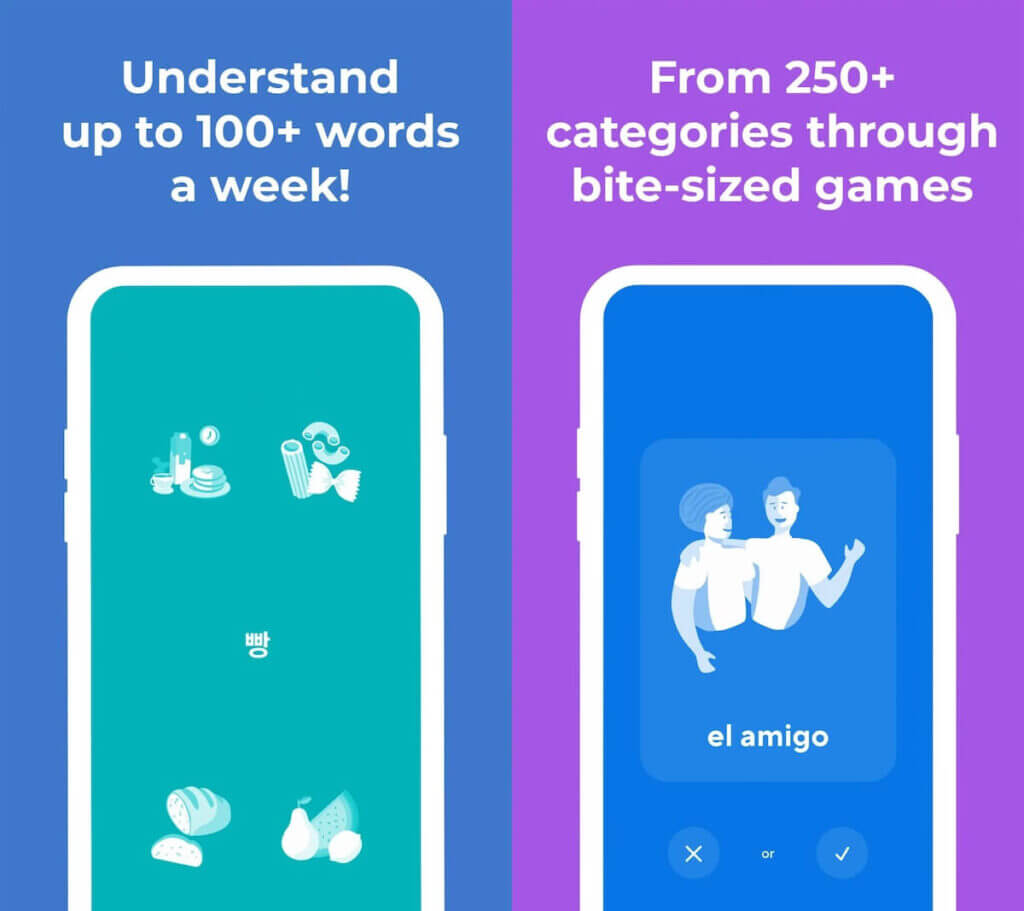*This article may contain affiliate links. For full information, please see the disclaimer here.
You’d be hard-pressed to find a language learner who hasn’t tried or at least heard of Duolingo. This free app was a hit even before it officially launched, with over 300,000 people signing up for its private beta.
Today, with more than 500 million registered users (42 million of them are active at least once a month) and 95 available courses in 38 languages, Duolingo is one of the most-loved language-learning apps.
But the persistent green owl is not without its flaws. It can get redundant fast as well as nonsensical. Case in point, what use do I have for learning 여우의 우유 (fox’s milk) in Korean?

If you’re looking for a Duolingo alternative, you’re in luck because there are so many options for you! We’ve included alternatives to Duolingo that also use the gamified approach, apps that have good free courses, and more structured options for serious learners. Let’s get to it, shall we?
What is Duolingo?
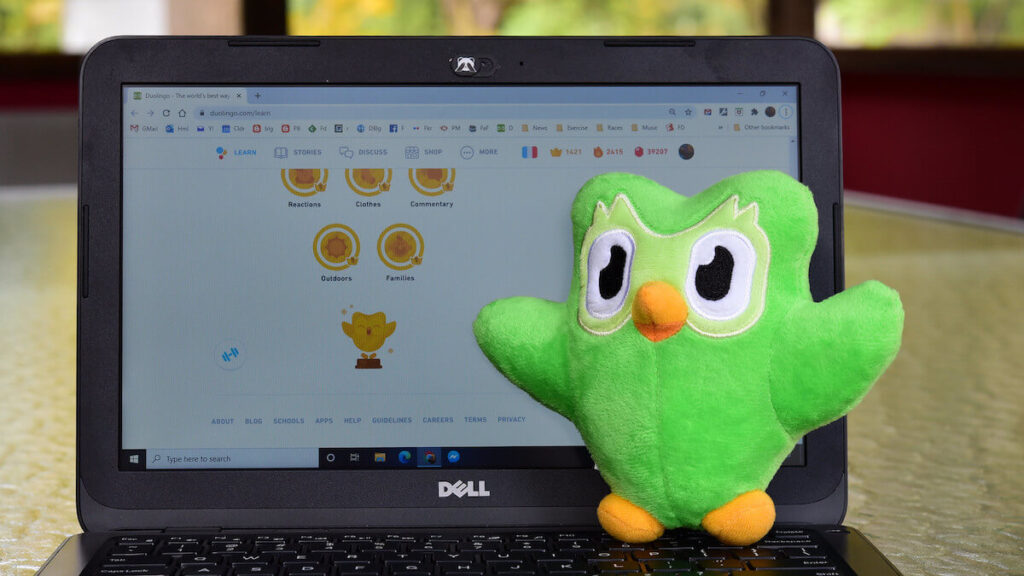
I’m keeping this quick; you can head over to our Duolingo review to get an in-depth look at this free app. I say free because even though Duolingo has a premium version, you get little advantage from it.
Duolingo makes language learning fun through short, gamified lessons. Two of the app’s unique features include the Leaderboard, which puts you against other learners, and Streak, wherein you get rewarded when you take your lessons daily.
Some courses also include podcasts and storybooks, audio lessons, and other bonus lessons that can be bought with gems.
Why should you look for Duolingo alternatives?
I’ve been using Duolingo to learn Korean, Japanese, French, and Latin. I love it but like I said earlier, it can get repetitive fast. There are lots of absurd and impractical sample phrases, too. And not all courses are created equally. For example, French has 10 checkpoints while Latin has only two.
Overall, it’s a great introductory app for language learners. But if you want more depth, more grammar explanations (sorely lacking here), more useful phrases, and a more systematic way to tackle a language, you’re better off looking for a Duolingo alternative.
In addition, there are lots of languages that are not yet (or probably won’t be) available on Duolingo. To name a few:
- Cantonese
- Lithuanian
- Albanian
- Icelandic
- Afrikaans
- Farsi
- Croatian
- Mongolian
- Swiss German
- … and more.
Considering that constructed languages such as High Valyrian and Klingon have made it to Duolingo, it’s a bit frustrating that the above languages are still not in the app. And with the now-defunct Duolingo Incubator, you can’t even see if Duolingo plans to add your desired language to their courses.
So, it just makes sense to move on and try these alternatives!
Best Duolingo alternatives for language learners
1. Babbel
One of the oldest language learning apps, Babbel expertly combines short, interactive lessons with structured content covering real-life vocab and cultural insights. The result? A holistic learning experience.
Babbel boasts a wide range of learning materials from app lessons to live classes, games, videos, and podcasts, making it a great Duolingo alternative. Progressing to the intermediate level won’t feel like a chore, thanks to the app’s immersive interface. Find out more with this Babbel review.
What I love about Babbel:
- Well-structured courses divided into 10-15 minute bite-sized lessons
- Crafted by expert language teachers and designed to take you to the intermediate level
- Various learning materials to keep you engaged
Pricing: Flexible plans, starting at $13.95/month. Find the latest Babbel promotions.
2. Mondly
Featuring bite-sized and engaging lessons, Mondly is a Duolingo alternative that addresses all core skills: writing, reading, listening, and speaking.
What’s stunning is that it manages to do that in as short as 10 minutes per day. Mondly has a good mix of interactive lessons that help you gain conversational vocab and develop a good grasp of grammar.
What’s more, the app is loaded with quality recordings of native speakers to help polish your pronunciation, which is a pain point of Duolingo. Here’s a rundown of Mondly’s amazing features. Also, check out this head-to-head comparison of Mondly and Duolingo!
What I love about Mondly:
- Quick and interactive lessons
- A good balance of vocabulary and grammar
- Sufficient listening and speaking practice
Pricing: Free daily lessons. Access all content for $9.99/month or $47.99/year. Check out the latest promo here.
3. Pimsleur
As of writing, Duolingo’s hands-free audio lessons are only available for French and Spanish. If you’re learning other languages and want a hands-free experience, you’ll need to find a Duolingo alternative.
Enter Pimsleur. Borne out of the 50-year-old Pimsleur Method, this app consists of core 30-minute audio lessons that help you start speaking from day 1. Using graduated interval recall, you’ll hear new words at systematic intervals and retain new vocabulary each time.
That’s not all though. Pimsleur also includes bonus materials such as games, quizzes, and flashcards for select languages. This Pimsleur review lists its best features.
What I love about Pimsleur:
- Helps build conversational skills
- Acquire useful vocabulary through science-backed, well-timed intervals
- Learning on the go or while doing chores
Pricing: $14.95/month for Audio-Only; $19.95/month for Premium (with bonus materials), or $20.95/month for All Access. Start your full access, 7-day free trial.
4. Rocket Languages
Learn a language on Rocket Languages
Another option for hands-free learning, Rocket Languages teaches thousands of practical words and grammar through high-quality audio lessons and well-structured reading materials. French, Spanish, Portuguese, Chinese, and Hindi are just some of the languages on offer.
Rocket focuses on 30-minute audio lessons, which are ideal for busy individuals and auditory learners. It also provides a lot of cultural content, which reinforces context.
Plus, for languages with different writing systems, there are extensive lessons that lay down the groundwork. Perfect for beginners and intermediate learners but still helpful for advanced students.
What I love about Rocket Languages:
- A vast library of downloadable audio content
- Interactive exercises and cultural lessons
- Helps build a strong reading and writing foundation
Pricing: Varies per language. Check the latest Rocket Languages promos here.
5. Ling App
Duolingo is not the only gamified language app out there. In fact, there are many other apps like Duolingo. One of the best is Ling.
Like Duolingo, Ling teaches languages through engaging mini-games. However, the games are more varied as there are quizzes, puzzles, picture-to-word matching, and sentence composition. You can even converse with a smart chatbot!
Gamified doesn’t mean dumbed-down though. Ling’s lessons use practical vocabulary and extensive grammar tips. Worth considering if you’re a beginner or intermediate learner.
What I love about Ling App:
- Diversity of games and challenges
- Useful and real-life vocabulary and grammar lessons
- Plenty of conversational practice
Pricing: Some content for free. Premium plans start at $4/month. Check the latest offers here.
6. Rosetta Stone
Learn a language on Rosetta Stone
If you’re looking for something more immersive, Rosetta Stone’s interactive and contextual lessons have you covered.
This time-tested language-learning app teaches languages in the context of conversations through its Dynamic Immersion method. You’ll learn phrases and sentences that you can use in real life, and train your ears to recordings of native speakers.
Depending on the language you choose to study, you may also be able to access live lessons.
What I love about Rosetta Stone:
- Well-established language course that covers the essentials
- Short lessons rich with audio and visual cues
- Immersive and contextual learning
Pricing: Starts at $7.99/month. Sign up now for the latest Rosetta Stone promo.
7. Memrise
Looking for free alternatives to Duolingo? Consider Memrise, a free flashcard app that combines gamified lessons and immersive content.
Similar to Duolingo, Memrise presents vocabulary lessons in a game-style manner. But on top of this, Memrise courses also include audio and video clips of locals. This adds another level of nuance and depth to the lesson.
Grammar isn’t Memrise’s strong suit but its contextual lessons help in this aspect.
What I love about Memrise:
- Extensive vocabulary lessons taught through flashcards, audio, and videos
- Listening and speaking practice
- Lessons feature native speakers
Pricing: Some features are available for free. Access all contents with Memrise Pro, starting at $5/month.
8. LingoDeer

For languages that have different writing systems, Duolingo introduces the characters before moving on to basic words and phrases. However, there are no attempts to explain the rules behind these characters or their role in the grammar of a language.
This is where LingoDeer shines. This app lays down a strong foundation before introducing words. Its Korean course, for instance, begins with extensive lessons on Hangul, even detailing the proper order of strokes. It also offers a lot of tips and doesn’t skip the grammar explanations.
If you’re learning a language seriously and not just to be able to utter a few phrases while traveling, this is a good Duolingo alternative.
What I love about LingoDeer:
- No guesswork on writing systems and grammar
- Various exercises improve writing, reading, listening, and speaking skills
- Cultural insights and lots of study tips
Pricing: Starts at $14.99/month
9. Clozemaster

Learn a language on Clozemaster
Gamified? Check! Learning in context? Check? Fun, free, and retro-looking? Triple check!
This is Clozemaster in a nutshell. It teaches languages through games, in particular a “cloze test” which consists of a sentence with a missing word. Your task is to fill the blank with the right word based on context.
I don’t know about you but that is challenging and fun. It’s also made for those who are way past Duolingo’s beginner lessons. This is the next level in 16-bit glory.
What I love about Clozemaster:
- Learning everything in context
- Fun and measurable progress
- Catered to intermediate and advanced learners
Pricing: The free version is good enough but if you want advanced features and stats, get Clozemaster Pro for $8/month or $60/year.
10. MosaLingua
Learn a language on MosaLingua
To build your vocabulary and learn words that you will actually use, MosaLingua is a good option. This app emphasizes the need to focus on 20% of the language you’ll need in 80% of the situations you’ll encounter, making it a great Duolingo alternative.
MosaLingua helps you memorize important words and phrases through an assortment of flashcards, grammar lessons, and audio clips taught in a pre-determined SRS schedule.
It’s scientific, engaging, and well-rounded. Pretty much what we want in a language learning app, right?
What I love about MosaLingua:
- Effective vocabulary expansion through flashcards and audio clips
- Well-explained grammar lessons
- Includes listening and pronunciation lessons
Pricing: You can access to MosaLingua Premium for $4.99/month or $59.90/year, after a 15-day trial.
11. Glossika

In terms of personalization, contextual lessons, and number of languages offered (total of 65), Glossika can easily rival Duolingo.
What makes Glossika unique is its use of full sentence practice in context, meaning your vocabulary, pronunciation, and grammar acquisition is more natural. This approach leads to fluency, as you learn to speak the language in a more natural way. What’s more, Glossika personalizes your learning content by giving you comprehensible input, meaning you practice sentences that’s one step beyond your current level.
You can choose full practice mode on Glossika (includes typing, dictation, listening, recall, and recording exercises) or listening-only mode (listening and recording only). Being able to choose means you can practice whenever, wherever.
What I love about Glossika:
- Massive database of carefully curated sentence
- Customization based on your skill level
- Hands-free option for on-the-go practice
Pricing: Starts at $16.99. Subscribe now or try it for free first! If you’d like to support Learn Languages From Home, make sure to complete your purchase through the Glossika website (not the mobile app). You can sign up and use whatever platform you want, but if you make the purchase using the website, I make a small commission. Thanks!
12. Busuu
At 13 languages, Busuu’s roster might seem slim compared to Duolingo. It also has a limited free version and instead uses a subscription-based model.
But if you’re a serious learner who wants to start with the basics and then move on to advanced levels (something Duolingo falls short on), Busuu is well worth it. What makes this a great Duolingo alternative is that the lessons are still bite-sized but well-structured.
The Premium and Premium Plus versions include awesome features like grammar lessons, personalized study plans, and feedback from native speakers. Pretty cool, huh?
What I love about Busuu:
- Engaging yet professional approach to learning languages
- Structured curriculum that can take you to advanced levels
- A more interactive community of native speakers and learners
Pricing: Limited features are available for free. Premium membership gives access to more useful features and starts at $5.83/month with the annual plan.
13. Drops
Another app that takes on a gamified approach is Drops. On its free app, lessons take only five minutes. Even the busiest individuals can surely squeeze a lesson in!
The first thing that’ll strike you about Drops is how visually appealing the interface is. This flashcard app features beautiful illustrations that you match with words (and vice versa), making it ideal for visual learners.
Drops won’t make you fluent, you need other apps for that. But you’ll definitely have fun learning basic phrases. You might even get addicted and find five minutes too short!
What I love about Drops:
- Stunning visuals and smooth interface
- Memory association exercises
- Short lessons that are easy to integrate into your day
Pricing: Free for five minutes of gameplay. Extend the time limit for as low as $5/month.
14. Mango Languages
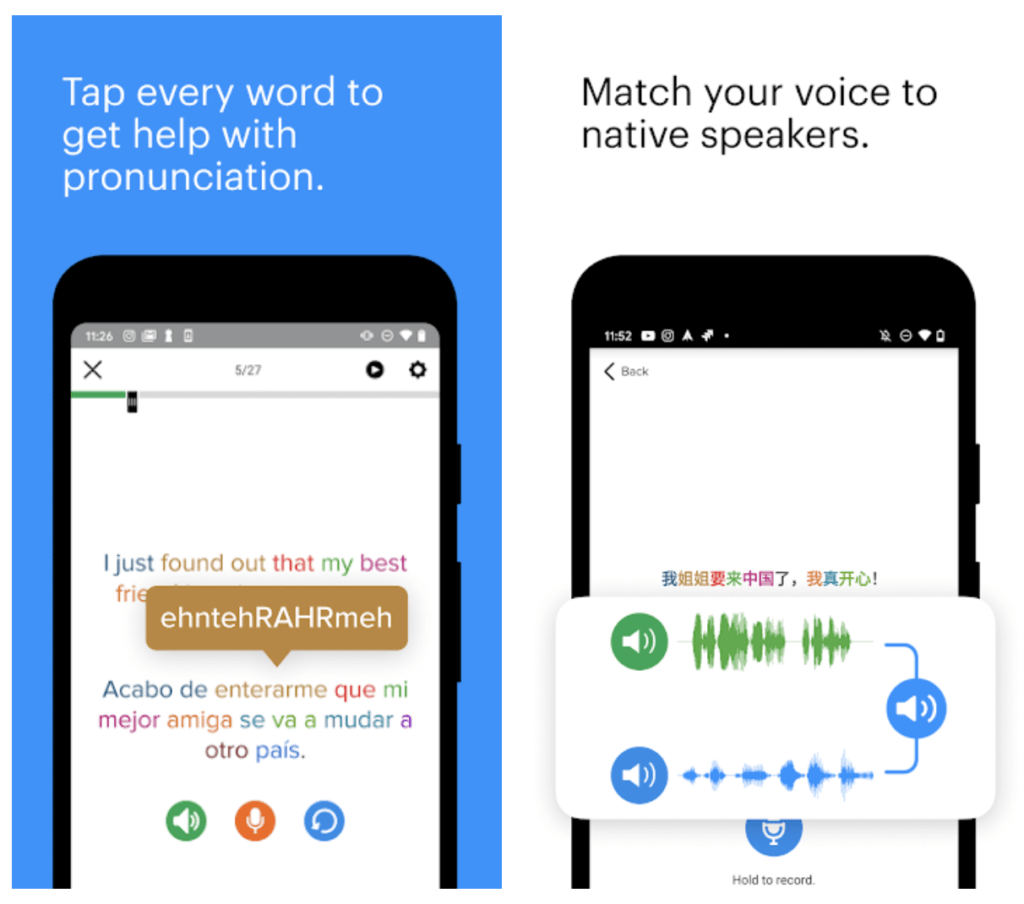
Learn a language on Mango Languages
Learners who thrive in “academic” settings will love Mango Languages. It is, after all, loved by educational institutions and homeschoolers.
Providing a good mix of vocabulary, grammar, speech lessons, and lots of cultural notes, this is an all-around app that’ll strengthen your foundations and equip you for real-world conversations.
Mango Languages teaches grammar in context so it’s not in your face. It also has an effective review system to establish recall.
What I love about Mango Languages:
- Context-based learning
- Practical vocabulary
- Voice comparison tools
Pricing: $7.99/month for a single language and $17.99/month for all languages
Conclusion

Duolingo is steadily growing and it will likely gain more traction as time goes by. As someone who loves learning languages and exploring new cultures, I’m grateful that Duolingo is making language learning more accessible and fun for people across the world.
However, at some point, we all need to take our learning to the next level or find other apps and other language resources that can meet our needs.
And so, my fellow language learner, do explore your options. The right app(s) for you is just a click away and the best way to find out if it’s a good fit is by trying it.

